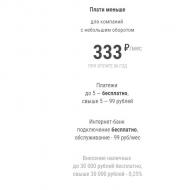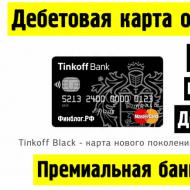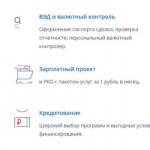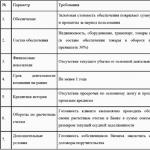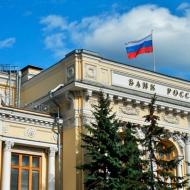
Which is cheaper than the Russian ruble. The cheapest currency in the world (16 photos). Why is the price of currency falling
Each state on our planet uses its own national currency, it is it that is used in circulation within the country. At the same time, the currency of the state is of great importance in the world market, the more expensive the cost of the national monetary units, the more authority the state has in the world arena and is recognized as economically developed.
Many people mistakenly believe that the cost national currency will directly depend on the wealth of the state, for example, the more natural resources has a country, the more expensive is the value of the national currency. In fact, this is far from the case, that is, the availability of resources does not in any way affect the value of the currency. In this article, we will provide an overview of what is the cheapest currency in the world.
Top 10
It is worth starting the review that all world currencies are recognized as the cheapest or most expensive in relation to the dollar, it is this monetary unit that is used all over the world for international transactions. Among other things, world currency used in many countries as investment asset... Nevertheless, we will consider cheap currencies against the ruble.
An interesting fact is that the US dollar was recognized as a single world currency, since the middle of the 20th century, it was the dollar that was chosen for settlements between states, thanks to fixed ratenot influenced by economic processes or financial instability.
Kyat
The tenth place is occupied by kyat. These are the banknotes of Myanmar, they have appeared in circulation since 52 of the last century, but, however, at that time, the national currency of the floor was the Burmese kyat. The state itself is located in the western part of the Indochina peninsula, its area is only 678,000 square kilometers. The peculiarity of the state national currency is that at the legislative level it is prohibited to export the national currency outside the state, but as for the import of foreign currency into its territory, there are some restrictions, in total, it should not stay on the territory for more than 6 months.
The cost of 1 kyat is 4 kopecks or $ 0.000701.
Cambodian riel
The ninth position is taken by the national currency of Cambodia, abbreviated KHR. The state is located in the southeast of Asia, it is a monarchical state. Here the monetary unit appeared in the 55th year of the last century, before that Indochinese piastres were in circulation. Initially, the national currency of Cambodia did not have a high value and was not in demand even among local residents, who secretly used foreign banknotes. At the moment, the situation has practically not changed, indigenous Cambodians still use the dollar as a means of payment, and this is even worse reflected in the value of the banknote.
The cost of 1 KHR is 0.02 RUB or 0.000248 USD.

Cambodian riel
Paraguay Guarani
This currency ranks eighth in our rating. The country itself Paraguay is rather poor, or to be more precise, it is on the verge of economic collapse. Corruption flourishes here, lack of an adequate level of education, more than half of the population lives below the poverty line, there are no jobs and a high level of inflation. It is these factors that determine the low cost of national banknotes. Although, on the other hand, Paraguay is a large exporter of cotton and soybeans, money not enough to ensure an adequate standard of living for the population.
The cost of 1 PYG is equal to 0.01 RUB or 0.000175 USD.

Paraguay Guarani
Uzbek sum
The seventh position is taken by the national currency of Uzbekistan, which appeared in circulation in 1994. Recall that this state was once part of the Soviet Union and Soviet rubles were in circulation on its territory. In fact, Uzbekistan cannot be called a poor country, because it ranks 4th in gold reserves, 11th in uranium reserves and 10th in copper reserves. Production is well developed here, agriculture and other industries.
The cost of 1 UZS is equal to 0.01 RUB or 0.000128 USD.

Uzbek sum
Lao kip
The sixth position belongs to the Lao kip. As you know, for the most part, each currency underwent a denomination, which does not at all refer to what type of Lao kip, initially this monetary unit had a low value, and it appeared in circulation back in 1952. And, even it should be noted that since that time it has significantly strengthened its position against the dollar. Laos or the Lao People's Democratic Republic is not a poor state, here the main share of the gross domestic product is industry, namely the extraction of minerals: copper, tin and gold, logging, processing of agricultural products, production of clothing, and 30% of GDP is agriculture.
The cost of 1 LAK is equal to 0.01 RUB or 0.000119 USD.

Lao kip
Guinean franc
The fifth place in our ranking is occupied by the Guinean Franc. The republic itself is located in Africa, and differs high level and inflation and banditry, which is why the value of the national currency is the lowest. But in fairness, it should be noted that the country has great potential, because there are natural deposits of gold, aluminum diamonds and other minerals, the extraction of which would significantly strengthen the value of monetary units.
The cost of 1 GNF is 0.01 RUB or 0.000111 USD.

Guinean franc
Sierra Leone Leone
The fourth place belongs to Sierra Leone - it is one of the poorest countries in Africa. There are quite a few reasons for the low cost of the national currency, because the state itself, due to various circumstances, did not enter the world market, which means that there is simply nothing to replenish the treasury. Among other things, at the moment the country is going through the post-war period and the deadly Ebola fever dominates on its territory.
The cost of 1 SLL is 0.0078565 RUB or 0.00012561 USD.

Sierra Leone Leone
Indonesian rupee
The Indonesian rupee took an honorable third place in our ranking, because it is one of the cheapest currencies in the world. Although Indonesia itself is considered economically developed, it is located in southeastern Asia. But unfortunately, the national currency is valued low here, the government of the state is taking various measures to strengthen the position of its currency, but so far there have been no special changes. The main industry is agriculture; there are 104 large industrial enterprises for the production of food products and fuels and lubricants throughout the territory.
The cost of 1 IDR is 0.004386 RUB or 0.00007 USD.

Indonesian rupee
Vietnamese Dong
Today, the second position is occupied by the Vietnamese Dong, although it must be said that some time ago it was ranked last in value in the whole world. The low value of the national currency is due to the fact that at the moment Vietnam is going through difficult stages of its development, there is now a restructuring from a centralized economy to a market economy, which is probably why the value of the currency is so low. But if the state continues to move at a given rate, then, most likely, in the near future the national currency will strengthen its position and reach the level of its neighbors.
The cost of 1 VND is equal to 0.002722 RUB or 0.000044 USD.

Vietnamese Dong
Iranian rial
Finally, the cheapest currency in the world in relation to the ruble is the Iranian national currency, in our rating it took the honorable first place. The low value of monetary units is associated with the ongoing hostilities with Iraq, plus political pressure and sanctions from the major powers. At the moment, the state does not have the opportunity to enter the world arena, which negatively affected its economy, but meanwhile, Iran has large reserves of oil, which means that it has potential, if not for the restrictions imposed on it, he would be able to present his goods on the world stage.
The cost of 1 IRR is equal to 0.001442 RUB or 0.000023 USD.

Iranian rial
What indicators affect the value of the national currency
First of all, the low cost of banknotes in circulation within the state is due to some factors. Let's list them:
- difficult economic situation;
- decline in GDP percent;
- growing inflation;
- low competitiveness in the world market;
- internal and external conflicts.
It should be said that the consequences of the fall in value also have a negative impact on internal economic processes. First of all, purchasing power is decreasing here, there is a surplus of goods that are not in demand within the state and cannot be sold outside of it due to low competitiveness or pressure from other states. Within the monetary policy the government can decide on the devaluation of national currency, that is, its artificial devaluation.
As a result, we answered the main question, which currency is the cheapest in the world, today it is the national currency of Iran, but it should be borne in mind that the dynamics of fluctuations in the value of monetary units is observed regularly, so the rating has its relevance only in mid-2018. By the way, until recently the national currency of the Republic of Belarus was one of the lowest in value, but after the denomination the Belarusian ruble exchange rate even surpassed the Russian ruble.
As you know, the entire world financial market is based on the fact that one particular currency has a cost price much more than another. The value of this or that money can vary strongly and rather dynamically depending on side factors related to changes in various areas related to the finances of any state.

Today, any changes in the exchange rate are traced thanks to specialized automatic charts, which are being worked on by specialists from various directions in the financial sector. In addition, it is possible to learn about all the current changes in the exchange rate, especially if it entails some rather serious consequences, from the news of the world of currencies, including on the Internet.
Currency rating
From all that has been said above, it is clear that the rate directly depends on certain financial factors and any side changes. The value of absolutely any money can also be influenced by tougher factors, most often this is expressed in artificial containment or support of a certain currency.
Please note that some types of currencies around the world do not just need artificial adjustment, but for quite logical reasons - to protect the state budget from all kinds of inflation.
Through this approach, those responsible for containment or support create ideal financial conditions states where this unit has state status.
In addition to all that has been said, it is worth mentioning that one way or another, the currencies of some countries of the world are uncontrollable, which is why sharp surges and crisis problems occur. However, it is important to consider that the main money of the world, for example, american dollars, are influenced by containment, but are constantly maintained. This makes the dollar one of the most expensive units in the world, optimal for large financial transactions and long-term storage.
The cheapest currencies
Where there is something expensive, of course, there must be something completely opposite, located in the lowest price range. This is exactly the case with the world financial marketwhere only a few currencies occupy the top of the value and never fall from it.
Note that large changes in value are only possible for units in the middle price range. Thus, money with a maximum and minimum value cannot be greatly altered in terms of its own value (except in rare cases called inflation).
The list of the cheapest currencies in the world, in the top 10 from the cheapest to the most expensive, includes the following monetary units:
- Paraguayan Guarani;
- Sierra Leone Leone;
- Lao kip;
- Franc of the Republic of Guinea;
- Indonesian rupee;
- Belarusian ruble;
- Goodness Sao Tome and Principe;
- Vietnamese dong;
- Iranian rial.
Please note that regardless of the price indicators of any particular currency, the state itself itself can have a completely contradictory state. This is due to several different factors, in particular, with the reserves of the state, in the capacity of which, as is known, the most stable in value and protected from inflation monetary units are acquired.
Of course, in order to fully understand what the cheapest currencies are, all the named money should be considered in detail. In addition, the impact of foreign exchange market for this or that money, since it is the employees of the financial sector who buy money inexpensively.
The first in the top 10 cheapest currencies in the world is the riel, originally from Cambodia - this is the cheapest currency in the world. This unit has always been and is likely to continue to be the lowest cost monetary unit all over the world.
Today the Cambodian riel is related to the major currencies of the world:
4041.10 for one dollar;
60.74 for one ruble.
Currently, the state itself, like the main currency, is actively developing.


Paraguay Guarani
The cost and value of this currency is as low as possible solely due to the weak development of the state. This is due to the fact that this country constantly changed one unsuccessful ruler for another, provoking an endless cycle of wars.
Today, the Paraguayan Guarani is related to the world's mainstream money:
5893.65 for one dollar;
88.58 for one ruble.
Please note that the country is still underdeveloped, which is why financial course actually does not change even after several years.


Sierra Leone Leone
Also, in comparison with the named country, in the case of this currency, its low value directly comes from the constant hostilities on the territory of the state, which impede stable development.
Today, in 2018, Sierra Leone Leone can be purchased at the following prices:
8,400.00 for one dollar;
126.25 per ruble.
The state is experiencing the most real hyperinflation, which is why the currency, most likely, will never leave the list of the cheapest money.


Lao kip
In this country, the economic sphere of activity is extremely poorly developed, which imposes all kinds of restrictions. Thus, this currency has firmly established itself in seventh place.
Today it is possible to buy a Lao kip at the following prices:
8509.40 for one dollar;
127.90 for one ruble.
Perhaps, after a while, the currency will be able to rise at least a couple of lines higher.


Franc of the Republic of Guinea
As you know, Guinea is one of the poorest countries in the world, due to the fact that the country was once an ordinary colony. Thus, despite the wealth of local lands, the state (or rather its currency) is forever stuck in the list of the cheapest.
Today, this money has the following relationship:
66.1832 against the dollar;
135.644 against the ruble.
Note that this last currency, which can rightfully be called the cheapest.


Other money
The remaining five currencies, although they have a value below the average, still it is extremely difficult to call them the cheapest.
In particular, this is due to the fact that in most countries, with the exception of the above, no one prohibits actively cutting money, using the opportunities to buy cheap money.
The more money you have, the better. This is the opinion of a significant part of the world's population. However, this does not mean that if you have millions in your hands, then you are rich. It all depends on what currency these millions refer to. So in the country of Zimbabwe, almost every inhabitant of its house had bills in denominations of 100 trillion Zimbabwean dollars, but it was almost impossible to buy anything with them. This currency is considered to be the cheapest in the world.
Today this cheapest currency in the world has been completely withdrawn from circulation. The ban on the use of own banknotes in the calculations came into force in 2009 on June 30. The reason for this was the collapse of the Zimbabwean economy, which experienced several currency devaluations. In 2008, the growth of inflation reached a record for the world economic practice of 231 million%. And this is just the official data. Other unofficial sources claim that inflation has reached an incredible 6.5 quinquatrigintillion percent.

A little about the fall of the Zimbabwean economy and the fate of the Zimbabwean dollar
In 1980, Zimbabwe declared itself an independent state. And a year later, it introduced its own currency - the Zimbabwean dollar. It was offered to the population as an alternative banknotes another state in circulation then - the Rhodesian dollar.
At that time, the state of Zimbabwe was considered one of the most developed and successful among others, located in Africa. Fields were cultivated, crops were harvested, and the products grown were effectively exported abroad. The main export goods tobacco, tea, cotton and sugarcane were considered. In addition, wheat and corn fields were cultivated here, as well as vegetables for the domestic market.

21,6% Country GDP gave industry (processing of agricultural products, tobacco and textile factories, the production of batteries for cars). In Zimbabwe, minerals were mined on a significant scale, including gold and diamonds.
True, the local black population, despite the country's economic development, remained below the poverty line. All profits were received by white-skinned farmers - the owners of developed farms. This fact inevitably led to clashes of interests of different strata of society, the coming to power of the new Mugabe government, and disastrous reforms for the country's economy. For some 8 years (2000-2008), the country has become an importer of essential food products and the poorest state on the continent.

Zimbabwean dollar - souvenir only
In 2009, Zimbabwe's own currency depreciated so quickly that commodity prices rose throughout the day. Taking into account the current crazy inflation, we can give the following example: in the middle of the day, a standard can of cola in a store cost 100 billion Zimbabwean dollars, and after a few hours it was impossible to buy it for less than 150 billion dollars.
The government decided to stop using the national, by that time already the cheapest currency in the world, and to carry out all settlements in more solid currencies of neighboring states and US dollars. This step turned out to be life-saving, and Zimbabwe's economy slowly began to rise up, although the country still maintains the position of one of the most backward states on the African continent.

And bills of the Zimbabwean dollar, this cheapest currency in the world, can be brought from a trip to this country today only as a souvenir. Tourists and collectors alike are delighted to acquire this symbol of an unprecedented economic crisis.
11/22/2019 at 01:12 PM · VeraSchegoleva · 7 180
Top 10. The cheapest currency in the world against the ruble
Most people know about the strongest, most stable and powerful currencies in the world: dollars, euros, pounds and Swiss francs. These currencies are the most stable, as are the countries that issue them. However, what about the world's least valuable currencies? Who knows their names and in which countries are they produced?
A low exchange rate can be a consequence of various economic downturns, such as hostilities, declining GDP, falling prices for goods that make up the bulk of exports, falling purchasing power, tight credit conditions, policy instability at home, etc.
Currency depreciation is often associated with poorly organized monetary policy and tax control decisions (Central Banking System).
In compiling this list, we found that it is definitely difficult to tidy up the least valuable currencies due to the rapidly changing economies in all of these countries. As this post further clarifies the value of your country's currency for you, we're sure you now realize that something that appears to be a phantom in one country may turn out to be wreckage (or any useless object you might mention) in another country.
However, at this point, it is possible to identify some depreciated national currencies. So let's take a look at the 10 cheapest foreign currencies (prices are in relation to the ruble).
10. Won, 0.05 p
Won is an official currencyused in North Korea. North Korean won is composed of 100 subunits known as chong. The won was introduced in 1947 and replaced the Korean yen.
Vona is exclusively used by locals with foreign visitors. Years of foreign sanctions and poor governance have resulted in high inflation in the United States, which has eroded the value of the win, forcing central bank The Democratic People's Republic of Korea issue banknotes up to 5,000 won.
9. Kyat, 0.04 r

Myanmar is located on the Southeast mainland. In 1989, the ruling military government changed the country's name to Myanmar instead of Burma. However, the adjective description is still Burmese and not Myanmarez.
Kyat is the official currency of Myanmar. It consists of 100 coins that are fairly limited in use across the country. The first kyat was issued in the form of gold and silver coins until 1889. But indian rupee was established as the national currency when the British conquered the country in 1942.
The kyat currency was reintroduced to replace the rupee in 1943, but the rupee returned to circulation again until 1952, when the current Myanmar kyat was introduced into the Burmese economy.
8. Cambodian riel, 0.016 p

Cambodian riel is the currency of the monarch state in Southeast Asia. It is widely believed that the name of the currency comes from the Mekong River, riel ("small fish" in Khmer). It is more likely that the name comes from the Mexican denomination of coins with a high silver content, which were used by Malay, Indian and Chinese merchants in the middle of the 19th century in Cambodia.
KHR has a low exchange rate and is very unpopular, which is why most of Cambodia prefers the dollar.
7. Uzbek sum, 0.01 r

In the Soviet Union, speakers of the Kazakh, Kyrgyz and Uzbek languages \u200b\u200bcalled the ruble a som, and this name appeared on the reverse side of banknotes, among the texts for determining the value of the account in all 15 official languages \u200b\u200bof the Union.
The country has created its own national currency - uzbek sumwhich is still falling in rate. High taxes, inflation, corruption and political restrictions have led to a significant decline in the price of this currency on the world market.
6. Guarani, 0.01 p

Paraguay is the second poorest country in South America. It is characterized by what might be called a catastrophic economic downturn. The country has been the victim of dire economic setbacks, catastrophic inflation, uncontrolled corruption, poor quality education, and high unemployment.
Due to the low level economic development, which prevails in this country, the value of the Paraguayan guarani suffers greatly. The country is an exporter of soybeans and cotton. However, the income generated from these exports is barely sufficient to cover the high cost of its imports. As a result, the Paraguayan Guarani is one of the cheapest currencies in the world.
5. Lao kip, 0.008 r

The only currency on the list of the cheapest currency in the world that has not depreciated is lao kip... As the only currency that was originally introduced at a very low rate, this currency suffered from a very low exchange rate for years.
Since 1952, the year of its release, the Lao kip has failed to strengthen against the value of the dollar. Despite this fact, the value of this currency continues to improve gradually.
4. Franc of Guinea, 0.007 p

Guinea, an African country with high inflation rates, growing poverty and prevalence, has long suffered from the devaluation of the national currency.
The most amazing aspects of this state are natural, such as precious metals and that are in abundance here. With all such resources franc of guinea must be very valuable. Unfortunately, this is not so.
3. Rupee, 0.005 p

Due to the low cost of old-style banknotes, 7 new banknotes in denominations from 1 to 100 thousand were issued by the presidential decree of September 5, 2016 rupees.
Indonesia is an economically stable and well developed country in Southeast Asia. However, her money has an extremely low exchange rate. The country's authorities are making efforts to strengthen the national currency, but all their efforts have led to only small changes.
2. Vietnamese dong, 0.003 r

The world's second most depreciated currency - vietnamese dong... Vietnam is still on the path of a complete transition from centralized economic system to market economy... As a result, the Vietnamese dong is the currency that costs the least.
Grossly depreciated relative to other world currencies, it has one of the lowest exchange rates in all countries except Iran. However, currency experts assure that economic policy Vietnam is on the right path to growth and will soon catch up with its neighbors. Soon, the Vietnamese dong may not even be ranked as the cheapest currency in the world.
1. Iranian rial, 0.0016 R

Iranian rial officially the least valuable currency in the world. To simplify calculations, citizens often use the term Toman, which means 10 riyals. If you are asked to pay 200 tomans, that means your bill is 2000 rials.
The Iranian-Iraqi war, threats to Israel, and the possibility that nuclear missiles threaten the world from the Iranian government have forced the world's superpowers to impose economic and political sanctions. These measures included restricting Iran's access to the global commodity market and led to a significant downturn in their economy.
As an oil exporter, Iran could no longer export its oil, which created a critical deficit in their national budget. All this led to the fact that the Iranian rial became the "worst" world currency.
In 2016, the US and EU lifted a number of sanctions, improving the economic situation and stabilizing local money, but in 2018 the US reimposed and tightened its sanctions.
Readers' Choice:
What else to see:

Switzerland is not easy to find on a map, but its currency is the strongest in the world. At the beginning of February 2006, 1 Swiss franc was worth 21.9 rubles, and ten years later it rose to 73.74 rubles, having strengthened by 236.7%. This currency is in great demand among wealthy people. It is not without reason that all Swiss banks are considered the most reliable in the world.
However, market analysts tend to believe that the Swiss franc is greatly overvalued. In January 2015, the local Central Bank canceled the peg to the euro - and in 10 minutes the currency rose by 20-30%. The strong franc hurts the local economy, as goods produced in the country have become expensive for foreign consumers. The authorities want to weaken their currency, but so far they are not doing very well.
In second place was the Chinese yuan. Until July 2005, this currency was pegged to the US dollar, but last years the local government has embarked on a controlled devaluation of the renminbi to boost economic growth. Despite all the weakening, the yuan has risen in price against the ruble by 228.1% over ten years. From October 1, 2016, the yuan will become the world's reserve currency. Russian banks already offer deposits in yuan, on which you can earn up to 4.25% per annum.
The Israeli shekel has become the third most reliable. This currency has appreciated against the ruble by 215.9% over ten years. The shekel exchange rate is floating, but stable - over ten years it has slightly depreciated against the dollar.
The American currency was only in seventh place. Since 2006, the dollar against the ruble has strengthened by 169.6%. The Thai baht (+ 195.7%), the Brunei dollar (205.9%), the Singapore dollar (+ 206.1%) and the Bolivian Boliviano (+ 211.17%), the existence of which many of Russians do not even knew.
Top 10 strongest currencies in the world
| № | Currency | Cost as of February 1, 2006, rubles | Cost as of February 1, 2016, rub. | Growth against the ruble over 10 years |
| 1 | Swiss frank |
21,9 | 73,74 | 236,71% |
| 2 | CNY  |
3,48 | 11,42 | 228,16% |
| 3 | Israeli shekel  |
6,02 | 19,02 | 215,95% |
| 4 | Bolivian boliviano  |
3,49 | 10,86 | 211,17% |
| 5 | Singapore dollar  |
17,3 | 52,97 | 206,18% |
| 6 | Brunei dollar  |
17,3 | 52,92 | 205,90% |
| 7 | Thai baht  |
0,71 | 2,1 | 195,77% |
| 8 | U.S. dollar  |
28,13 | 75,84 | 169,61% |
| 9 | Japanese yen  |
0,23 | 0,62 | 169,57% |
| 10 | UAE dirham  |
7,65 | 20,55 | 168,63% |
The most expensive currency was the Kuwaiti dinar, which was sold on the stock exchange on February 1, 2016 for 247 rubles. 89 kopecks per unit. However, its growth to russian currency amounted to 157.5% (18th place). The euro has gained 140.6% in ten years (25th place), and british pound - 115.72% (32nd place).
Dollar check
If the dollar is the initial currency, then the Chinese yuan will come out on top among the top ten leaders, which has strengthened against the dollar by 24.8%. The Swiss franc came in second with 20.3%. The third, as in the main study, was the Israeli shekel, which added 14.8%. It is also confirmed that the Thai currency turned out to be stronger than the American one - it grew by 8.7%.
Why is the ruble always weakening?
The national currency is a mirror of the solvency and development of the economy, says Sergei Alin, deputy director of the analytical department of the investment company "Okay Broker". According to him, the ruble is highly dependent on the cost of oil. The solution to the problem can only be diversification of the economy and improvement of the investment climate.
“The ruble is mainly weakening against other currencies due to high inflation. It is a consequence of the faster growth of tariffs natural monopolies, expectations of the population and falling prices for raw materials, primarily for energy, ”says Natalya Levina, Deputy Chairman of the Management Board.
Invest wisely
Sergey Alin claims that investments in foreign currency in order to protect savings for the next 10 years, will definitely pay off. The expert recalls that after the 1998 crisis, the dollar rose from 6 to 21 rubles, and today it has already approached 80 rubles.
If the situation on the market is heating up to the limit, then it is logical to keep part of the funds not in the bank, but in “paper” form, ”the expert advises.
“Nobody knows what will happen in the world on the horizon for 10 years. For example, no industry analyst predicted a sharp drop in oil prices to $ 27 per barrel. To protect your savings, you need to diversify your portfolio by investing in US dollars, rubles, highly liquid stocks and gold, ”warns Natalia Levina.
Vadim Tikhonov, head of the Sravn.ru analytical center, also recommends diversifying risks by investing in several assets. Relying only on dollars is risky as the US currency has periods of growth and weakness. Each such cycle lasts about 15 years, the expert recalls.

Where to buy rare currencies?
Many exotic currencies can be purchased at russian banks... For example, this applies to Swiss francs, yuan, Japanese yen, Israeli shekels, etc. “The main thing is to buy currency at a real bank representative office, and not in an incomprehensible exchanger at a metro station or in a tent, etc. Better to take the time and compare, choosing the most profitable proposition... Of course, if you are going to buy foreign currency for the long term, then it is not necessary to chase a difference of several tens of kopecks, "advises Sergey Alin from OK Broker.
The ideal option is to place your savings in 2-3 types of foreign currencies.
For those who need larger than the amount, it is more profitable to go shopping in a country where the required currency is in circulation. For example, it is more logical to buy Thai baht in Thailand, and dirhams in the UAE. In this case, you will first have to buy American dollars for rubles. If you go somewhere with rubles, then the losses on the course will be significant.
Experts do not recommend buying euros if you are not a frequent visitor to the euro zone - the countries of the European Union are worried economic crisis... Better to bet on the Singapore dollar, yuan and Swiss franc.


